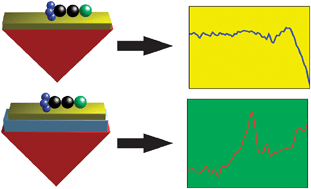Dielectric interlayers for increasing the transparency of metal films for mid-infrared attenuated total reflection spectroscopy†
Abstract
By depositing a continuous, thin metal film on a substrate coated with a mid-infrared (

* Corresponding authors
a
Max-Planck-Institut für Eisenforschung GmbH, Max-Planck-Str. 1, 40237 Düsseldorf, Germany
E-mail:
a.erbe@mpie.de, aerbe@arcor.de, m.reithmeier@mpie.de
Fax: +49 211 6792218
Tel: +49 211 6792890
By depositing a continuous, thin metal film on a substrate coated with a mid-infrared (

 Please wait while we load your content...
Something went wrong. Try again?
Please wait while we load your content...
Something went wrong. Try again?
M. Reithmeier and A. Erbe, Phys. Chem. Chem. Phys., 2010, 12, 14798 DOI: 10.1039/C0CP01125H
To request permission to reproduce material from this article, please go to the Copyright Clearance Center request page.
If you are an author contributing to an RSC publication, you do not need to request permission provided correct acknowledgement is given.
If you are the author of this article, you do not need to request permission to reproduce figures and diagrams provided correct acknowledgement is given. If you want to reproduce the whole article in a third-party publication (excluding your thesis/dissertation for which permission is not required) please go to the Copyright Clearance Center request page.
Read more about how to correctly acknowledge RSC content.
 Fetching data from CrossRef.
Fetching data from CrossRef.
This may take some time to load.
Loading related content
